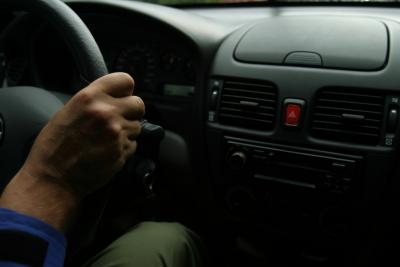
Nothing can be more frustrating than sitting in your vehicle and turning the key only to hear an annoying click or a dragging starter. Many times, the battery gets blamed, when in reality the problem exists with defective interior parts of the starter motor. The armature inside the starter, composed of brushes and windings, can wear just like any other automotive component. Since the starter motor relies on an electrical field to turn the engine over, any weak or broken part in the armature contacts can result in a no-start condition. Detecting a bad or worn armature can be performed by the industrious vehicle owner.
Test your battery to make sure it has a full charge and that the ignition and fuel systems function normally. Use the volt scale on a multimeter to check the battery's state of charge. Connect the positive lead of the multimeter to the positive ("+") terminal on the battery. Connect the negative lead of the multimeter to the negative ("-") post on the battery. Look for a reading of 12.5 volts or more. Charge the battery if it reads less.
Start the vehicle. Notice any reduction in the engine rpm (revolutions per minute) while it turns over. With an adequately tuned engine and a fully charged battery, detecting a low rpm as the engine turns over will be the first indication of a dragging starter motor. This results from a weak stator, worn brushes or high resistance in the armature windings.
Hook up a multimeter to the vehicle battery. Select the amp scale on the multimeter. Connect the multimeter positive lead to the positive ("+") battery post. Connect the multimeter negative lead to the negative ("-") battery post. Disconnect the main coil wire from the ignition coil, or the high voltage wire (if so equipped) from the coil pack and ground it to the engine by placing it against a bare metal surface.
Have an assistant turn the key to the "start" position, and watch the amperage reading on the gauge. Allow the engine to turn over six or seven times while you read the gauge. An amperage draw over your manufacturer's specifications will indicate a bad or worn armature. Generally speaking, any reading over 250 amps will indicate a bad armature.
Use the floor jack to lift the vehicle front end high enough to place two jack stands under the front end. Slide under the vehicle and locate the small cylinder that sits on top of the starter motor -- this will be the solenoid. Have your assistant turn the key to the "on" position. Take a jumper wire and place one end to the large battery wire that connects to the solenoid. Place the other end of the the jumper wire to the medium size wire (igntion wire) on the solenoid.
Listen to the starter motor while you make the connection with the jumper wire. The starter should engage with a click and start to spin. If it spins, the solenoid, wiring and ground contacts have been eliminated as the failed part. If the vehicle refuses to start with a good solenoid, it indicates the starter motor armature and brushes have failed, or the brush contacts have worn or broken, or the starter motor end bearings have jammed.